
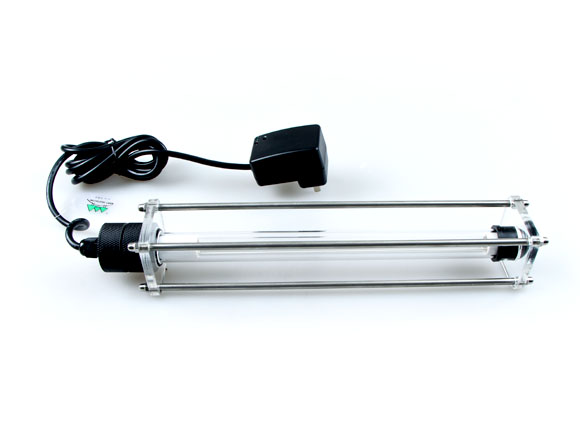
Picture for a moment, the last time you swam. Now imagine what that experience would have been like if the pool was not sterilized. Cringeworthy isn’t it? Sickening too, in a literal sense, given the risk of waterborne diseases.
When an aquarium is not sterile, fish experience the same challenges. The only difference is that they have no way of articulating it short of ailing and dying. If you own an aquarium, certainly that would be the last thing you want for your fish.
This is the short answer for why your aquarium needs a UV sterilizer. If you are still on the fence about it, let’s delve deeper and discuss what aquarium UV sterilizers have to offer.

Source: Pixabay
An aquarium is a biological ecosystem. As such, it contains microorganisms such as germs and bacteria which can be harmful to the fish and general running of the aquarium system.
A fish tank UV sterilizer is designed to address this challenge. It is made of a UV lamp that emits a measured level of ultraviolet radiation to eliminate harmful microorganisms in aquarium water.
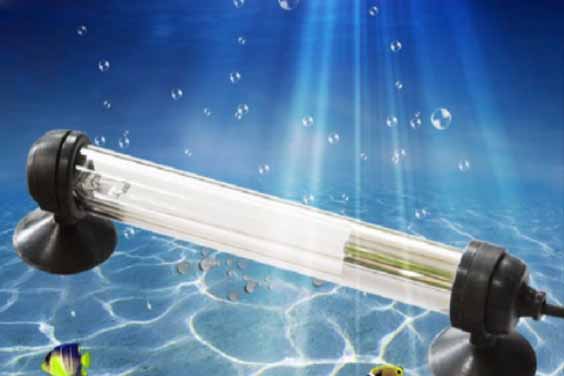
Source: aquariumfiltersetup.com
There are chemical sterilizers that you could use to sterilize your fish tank. The problem is, chemicals can be harsh on some fish. They also require you to be keen on portions and remember to treat the water right on schedule to maintain a healthy balance.
In contrast, a UV light is a plug and play solution. You only need to turn it on and it does the rest. The best part? It is not at all harmful to fish or plants in an aquarium because UV irradiation can only penetrate the thin cellular membranes of single-cell microorganisms.
Further, seeing as UV light does not trigger any chemical reaction, this means it will also not interfere with the pH balance of aquarium water. You would reckon its benefits end there, right? Not quite. If you tend to forget to sterilize your aquarium on time, you could choose an aquarium UV sterilizer that has a timer. It would come on all on its own at set intervals.
Aquarium UV sterilization is a great solution but it is only fair that you know what it can and cannot fix for you. That way, you know what to expect and how to make up for its shortfalls.
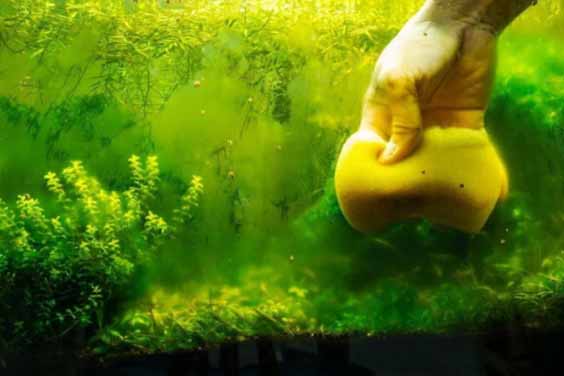
Source: Pinterest
When algae begin to grow in your aquarium, the water turns green. It makes your fish tank murky and you may have a hard time seeing how your fish are faring. Not to mention how unappealing a murky tank is and the possibility of the bad odor that goes along with algae.
UV irradiation breaks down the cell wall of free-floating algae in the aquarium. They then form a film like mass which is easier for the filter media in your aquarium to get rid of as waste.

Source: Pinterest
Fish get sick from bacteria too. This is why you need to ensure that the aquarium water is kept sterile. Just like with the algae, exposure to UV irradiation kills bacteria by invading their cellular composition.
That said, UV light is an equal opportunity eliminator of bacteria. It does not discriminate between the helpful and the harmful. Yes, you read that right. There are some types of helpful bacteria in an aquarium that are essential in the processing of various kinds of waste.
Fortunately, the good bacteria settle at the bottom of the tank while the villainous strains arrogantly float in the water. If you run your aquarium for a while before turning on the UV lamp, then the two will have separated and only the bad bacteria will be eliminated.

Source: Pinterest
Parasites can enter the water through contaminated water. Sometimes the fish may also come in the tank already infected. Whichever the case, it is a problem that you need to nip in the bud because parasites reproduce and could wreak havoc in your aquarium.
Given as parasites are protozoa, UV irradiation penetrates their cell membranes easily. In this case, it has the effect of destroying their DNA which makes them unable to reproduce. This curbs their spread but you may still, unfortunately, lose some infected fish as UV light cannot kill aquarium parasites already present in fish bodies.
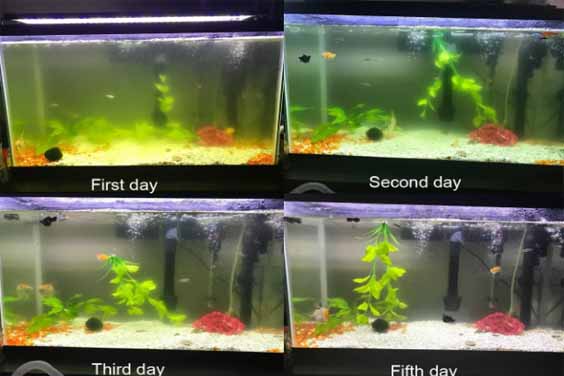
Source: Amazon
If you are lucky enough to find a good aquarium UV sterilizer, water clarification happens like some kind of magic. One day the fish tank is murky and the next, you can see right through it. Over the next few days, it may even get clearer as bad odors also go away. So, how does this happen?
Algae is the biggest culprit of water turbidity. As it gets eliminated so does its green unsightly hue. Further clarification and deodorization also come about from the elimination of other microorganisms that may have been causing an increase of waste in the fish tank.
That said, even as a UV sterilizer transforms your fish tank back to its glorious self, it does not absolve you of clean up duty. You will still have to perform aquarium water changes and clean or replace your aquarium filtration tools.

Source: Pixabay
Fish tanks vary in size, fish population, vegetation, and salinity. As a result, each tank would work best with specific UV sterilizers than others. Let’s examine some factors that you should consider when buying an aquarium UV sterilizer.
Tank size- the larger the aquarium the more water there is to sterilize. As such, it is best to choose an aquarium UV sterilizer with high wattage and high flow rate. High wattage means that microorganisms are exposed to higher irradiation which may help eliminate them quicker. A high flow rate would ensure that more water flows through the UV sterilizer within a shorter time.
Salinity- marine fish tanks differ from freshwater tanks in that saltwater can be corrosive. Therefore, if you have a saltwater aquarium, ensure that the UV sterilizer you choose is rated for saltwater use.
Quality and Durability – any device that constantly has to be in contact with water is subject to high levels of wear and tear. For this reason, it is advisable that you aim for a brand that uses innovative manufacturing processes durable inputs for its UV sterilizers. Stainless steel, for example, is a sturdy and non-corrosive material. It is also easier to clean and more durable than plastic.
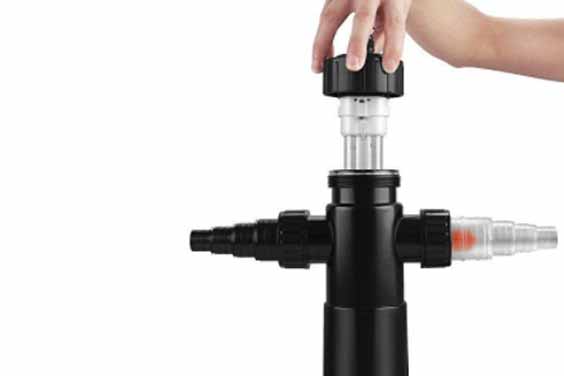
Source: Pinterest
Good quality UV lamps have a lifespan of about 8000 hours. When this time lapses, the quality of their functionality may diminish or be altogether non-existent. To avoid this you will need to replace the bulb as stipulated by the aquarium UV sterilizer manufacturer.
Whenever possible, purchase replacement bulbs from the same manufacturer as alternative brands may end up being incompatible. Exercise extreme caution as well when handling both the old and new UV bulbs as their irradiation is harmful to your health. Ensure that you:
Wear gloves when handling UV bulbs
Only handle the bulb when it is off and cool
Avert your eyes away from the UV bulb whenever it is on unless you are wearing protective goggles
During the change, you may need to clean some parts of the UV sterilizer especially if it has filters. Be keen to avoid water contact with the electrical chamber as this may cause the sterilizer to malfunction. The reassembly process should also be done with the utmost care to ensure all parts lock into each other properly.
Given all the solutions recommended for an aquarium, you may understandably have been wary of ordering an aquarium UV sterilizer. However, as you may have learned from the benefits listed above, your aquarium would thrive with the right UV sterilizer. Perhaps it is time you said goodbye to worrying about the health of your fish and invested in this worthwhile solution, wouldn’t you say?



Leave a Reply